Last week I shared my favourite photograph from the Little Desert, a place I adore. Just a couple of days later everything changed as thousands of hectares were burnt by raging bushfires started by dry lightening strikes. 65000 hectares were burnt in one day and the fires are still burning. I am devastated. Gutted. My heart goes out to the people and wildlife impacted by the devastation, and my thanks go out to the fire fighters, volunteers and rescuers. This week’s photographs are a tribute to the Little Desert.
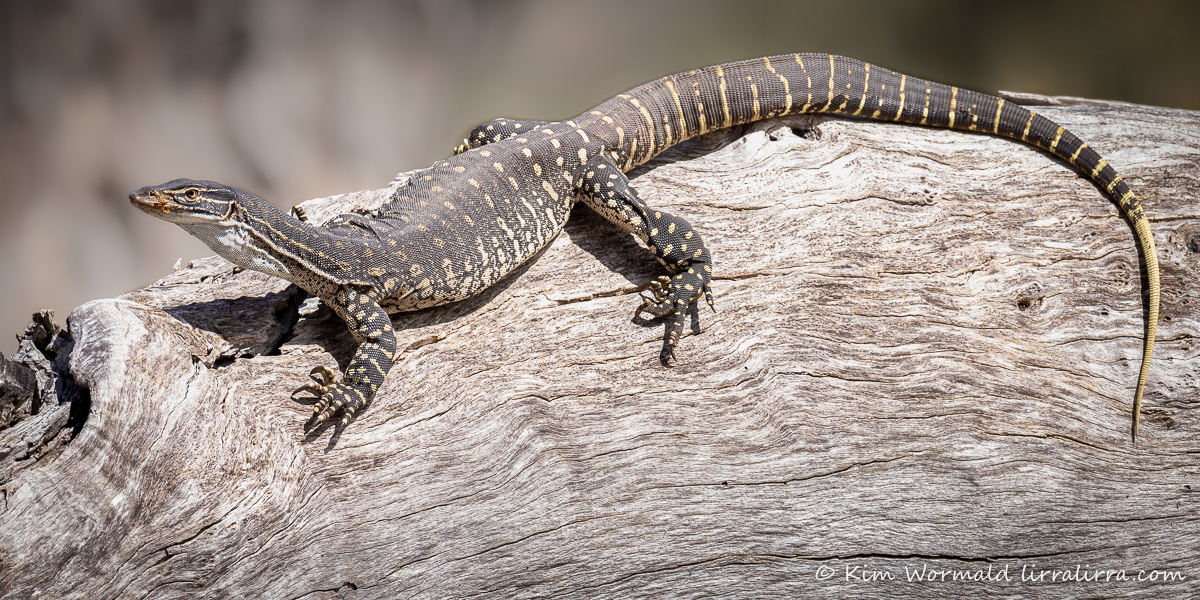
This Sand Goanna was one of the first creatures I saw on my recent trip to Dimboola. This stunning specimen was about 1.5 metres long and kept moving. It was tricky to get a shot using a 600mm lens as there were so many bushes and trees between us. If it hadn’t been thoughtful enough to curl its tail around I would have had to go back another ten metres. The more I look at this shot the more fascinated I am by the spots and stripes. Breathtakingly magnificent. They shelter in burrows, sometimes up to a metre deep and often tucked behind rocks or fallen trees. I’m hoping that this strategy will have kept it safe.
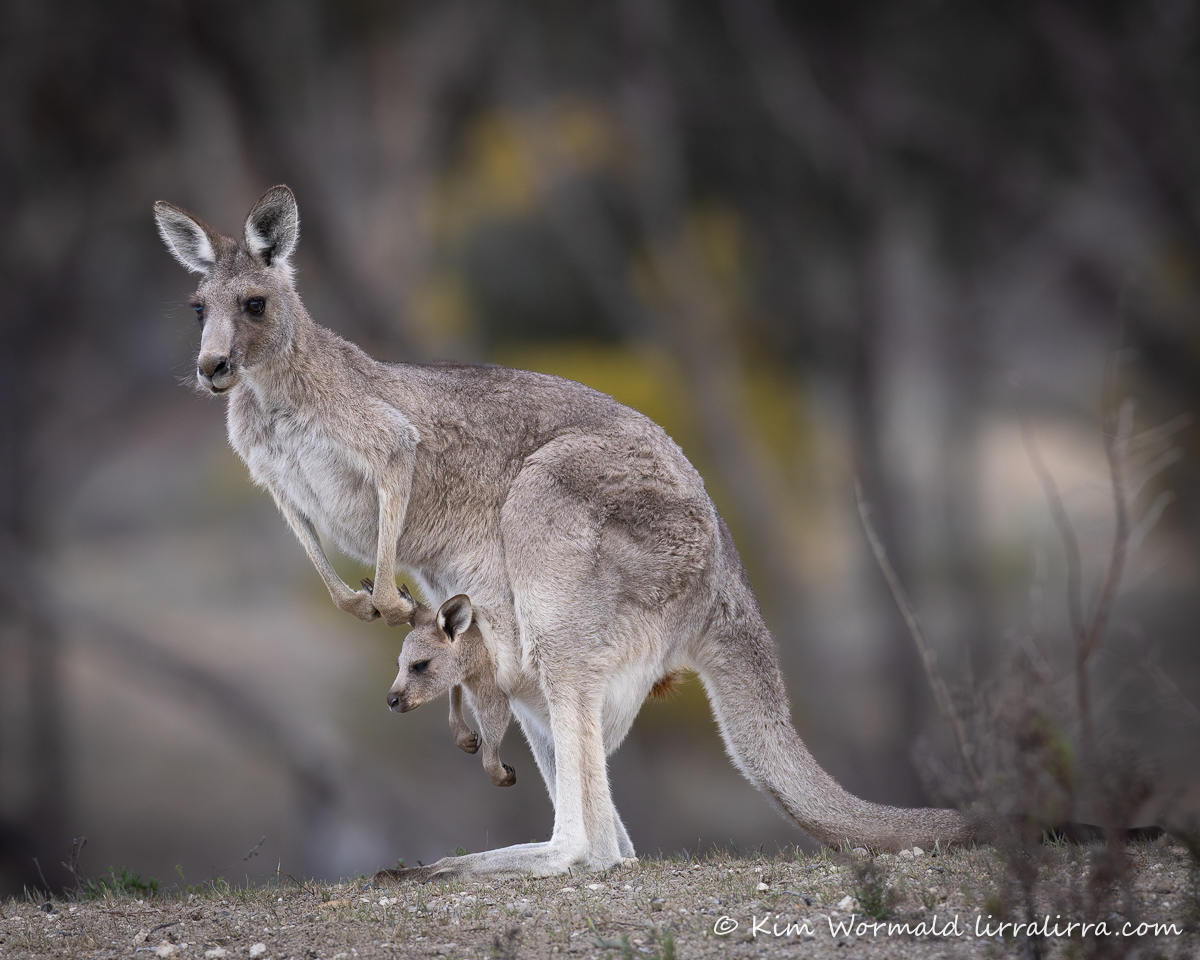
At the time of my most recent visit, late last year, the chairperson of the Snape Reserve Committee of Management was Sharyn Cook – it’s not every day that you are lucky enough to meet a kindred spirit. I was absolutely blessed to be able to hunker down beneath my fabric hide and wait patiently to see what, if anything, turned up at a dam that Sharyn very kindly showed me. Seeing this mumma kangaroo with her joey was a definite highlight. I love watching kangaroos interact with each other. They live in extended family groups and show such heartwarming tenderness towards their joeys that it gives me goosebumps.
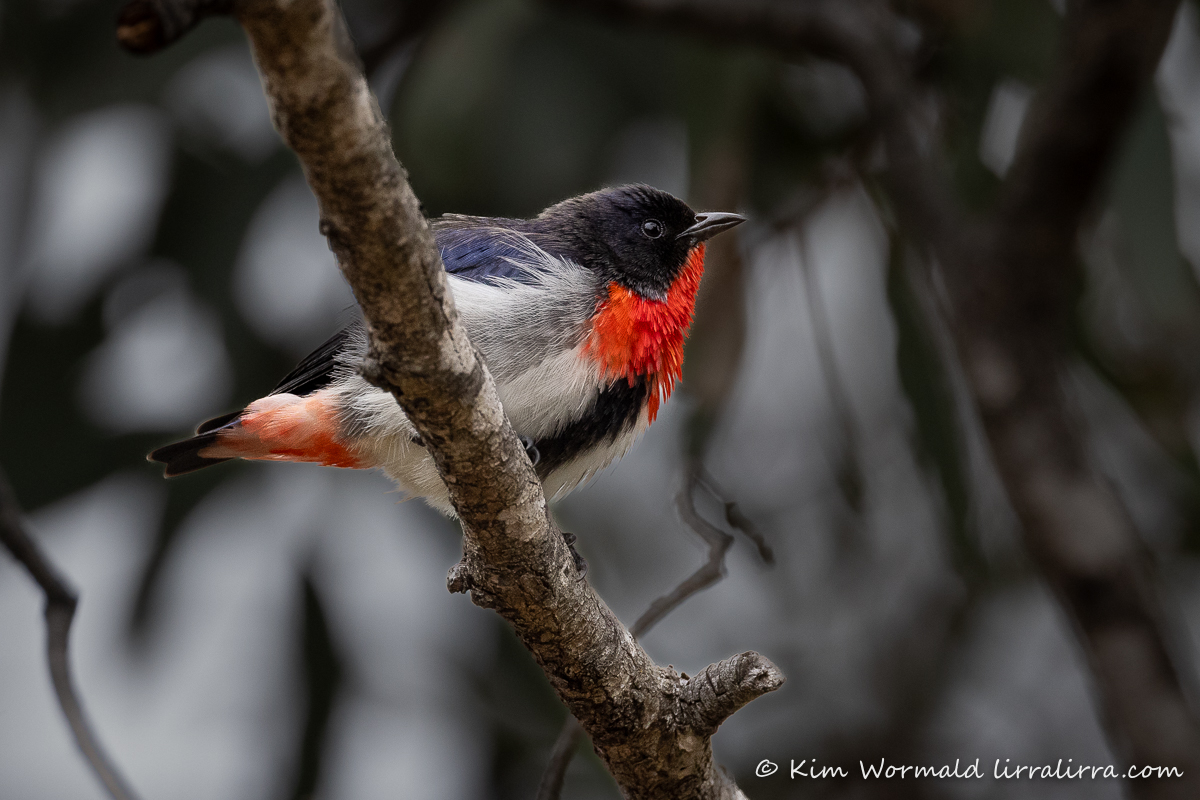
I recognised the call of the Mistletoebirds before I spotted them. At first I only saw the subtly coloured female but then she was joined by the distinctively marked male. At just 10cm and 9 grams they are very tiny woodland gems and the only representative Australia has of the flowerpecker family.
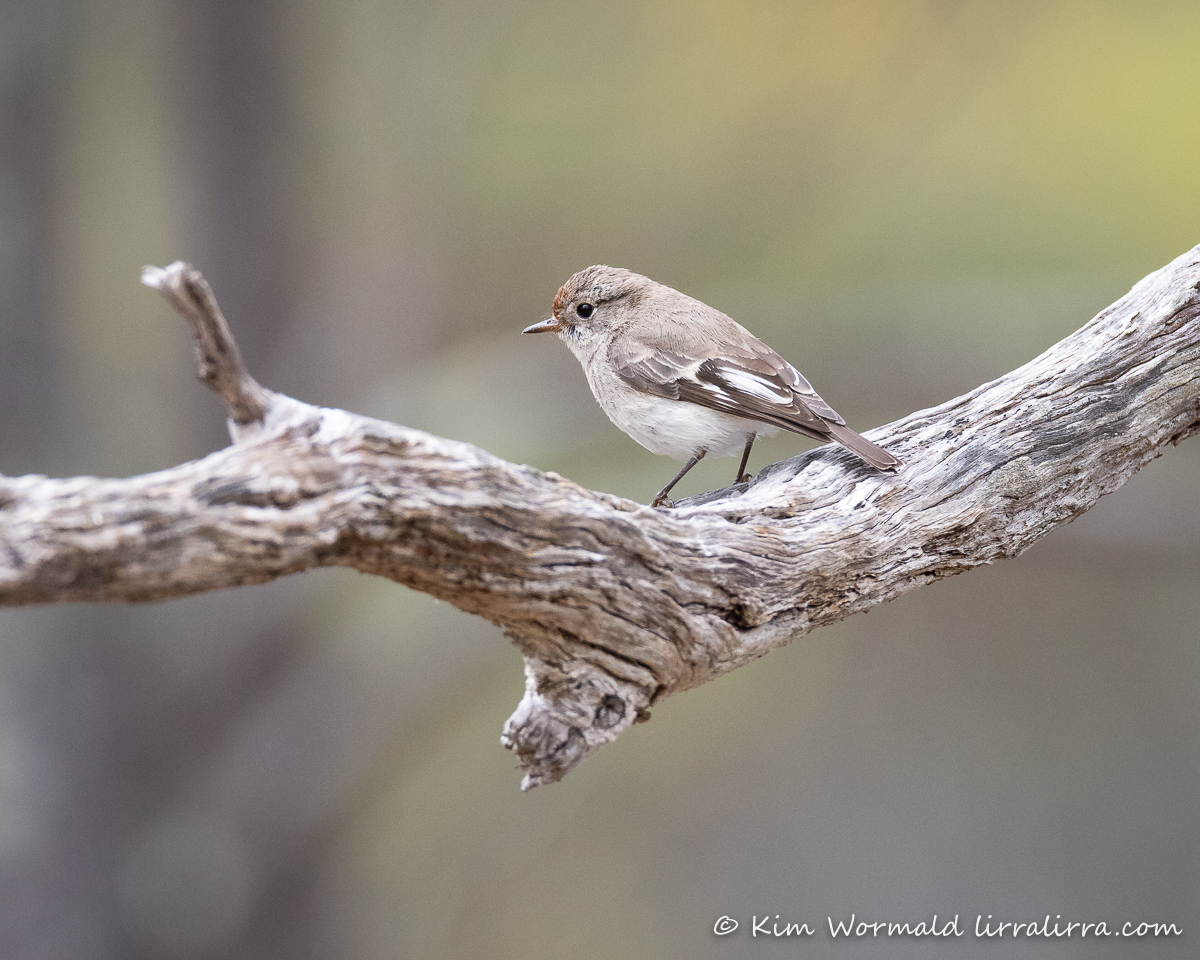
This female Red-capped Robin came into view when my memory cards only had two shots remaining, luckily this was one of them. You can just see the hint of a red cap on her forehead.
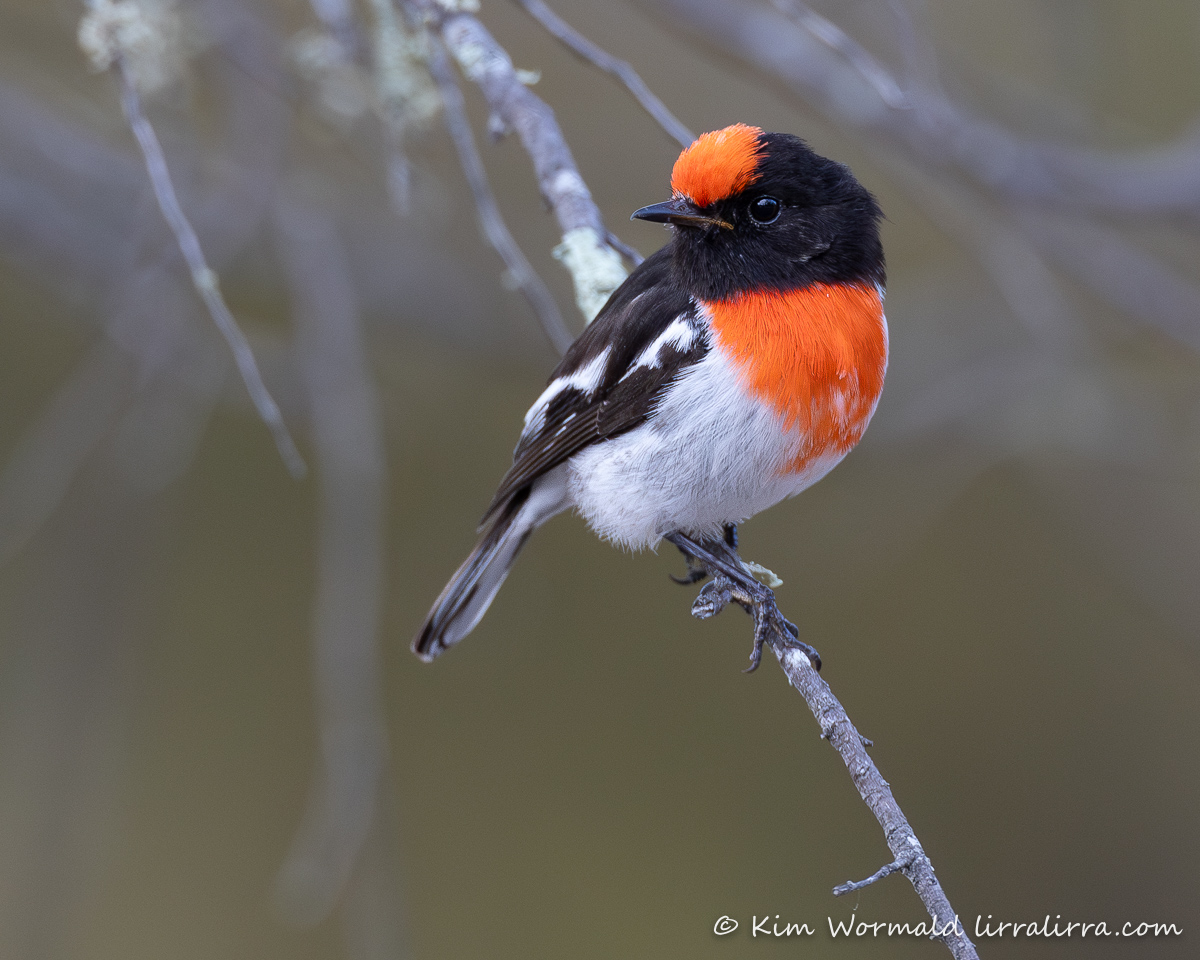
I didn’t see the male Red-capped Robin until the next day. I returned to the same spot and sat for ages on a soft red cushion that Sharyn had left there for me as a marker (I’m dreadful at finding my way back to places, only recognising tracks by which birds I saw where). I refuse to use call playback and had given up on my hope of seeing the male robin and was driving away when he suddenly flashed across the track ahead of me. I was rapt and photographed him from my vehicle as he foraged around me for a pretty long time.
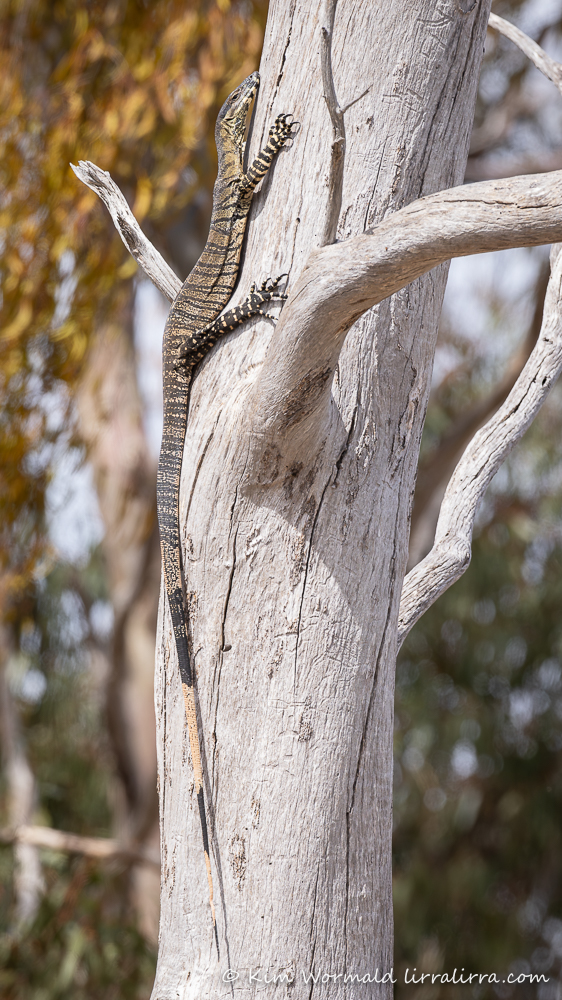
This wonderful reptile is a Lace Monitor, also known as a Tree Goanna. By my reckoning it was almost two metres long. It was also tricky to photograph with a 600mm lens, especially as I kept misjudging where its tail ended due to the light and dark sections.
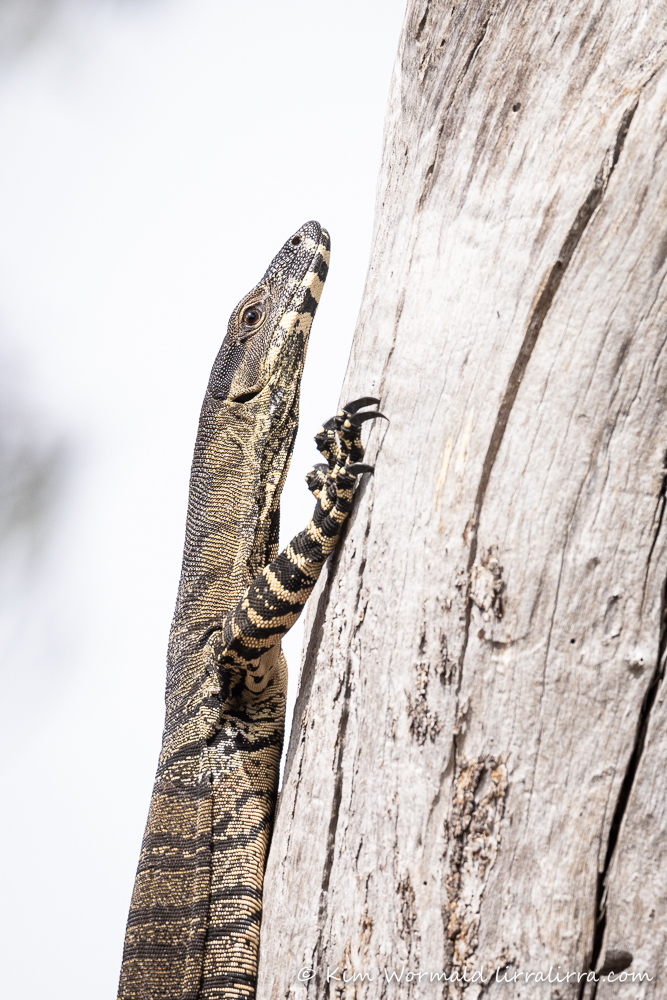
This close-up of the Lace Monitor shows the texture of its incredible skin and the wonderful markings that provide excellent camouflage.
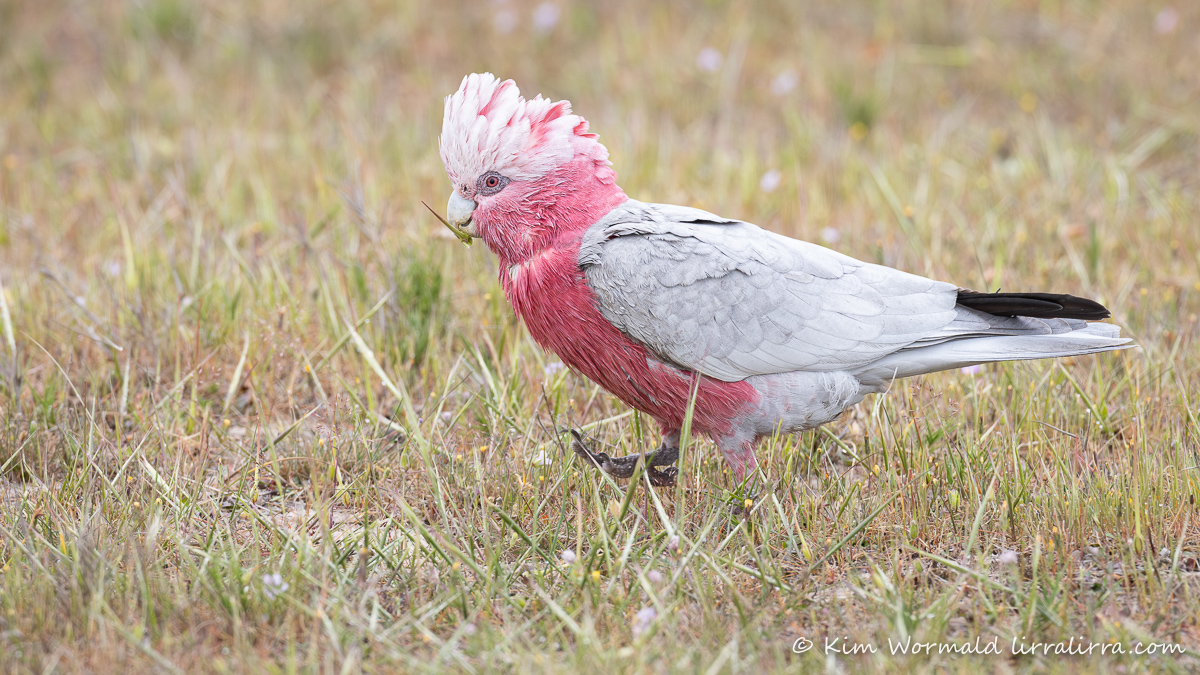
There was a day with some drizzle while I was there, including when I stopped to watch a group of Galahs foraging among the grasses. I always drive slowly on 4WD tracks, keeping vigilant for creatures on and off the track. This Galah was one of a distant group when I first saw her (females have pink irises). I was happily watching the little group as they wandered about when this female made her way towards me, coming closer and closer. You can probably tell from the angle of the shot how close she came to my vehicle, and how wet she is from the rain.
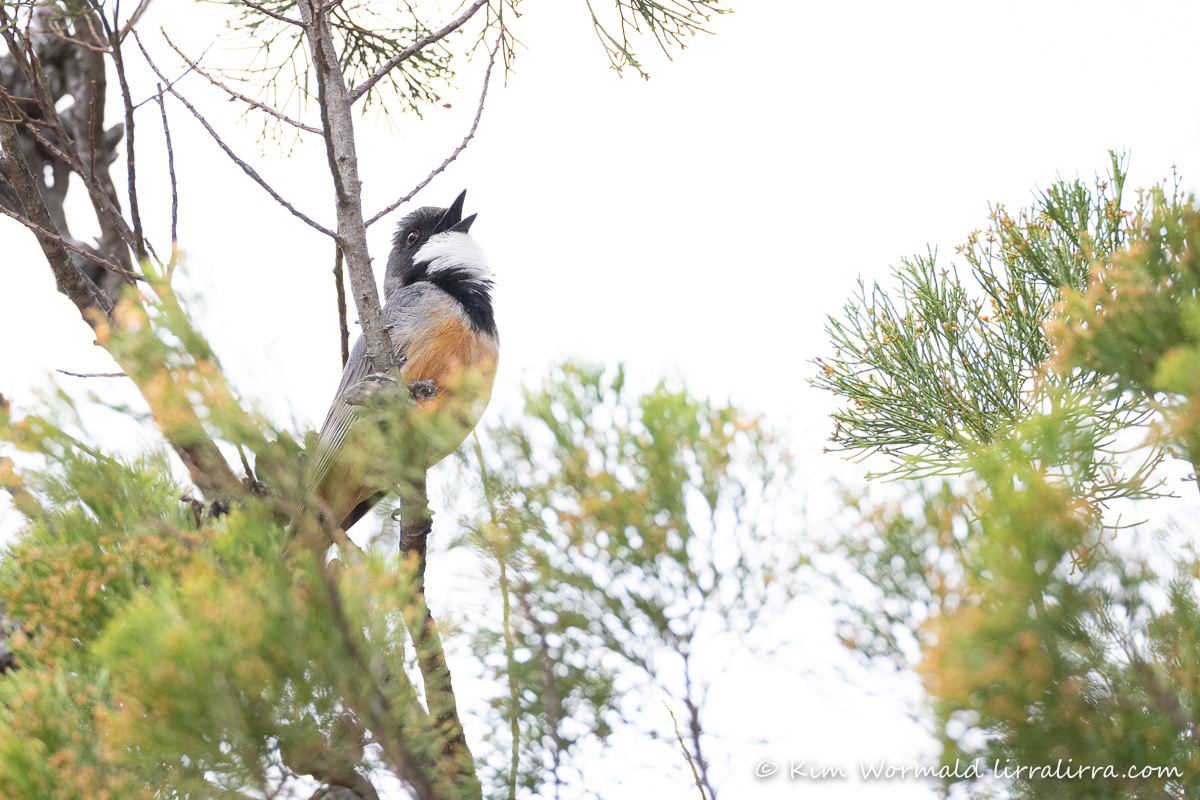
The call of the Rufous Whistler is just beautiful. It took me quite a while to spot him in a place where I could manage to get a photograph. After giving myself a fright with a Tiger Snake some years ago I’m always mindful of where I’m treading when I’m wandering around looking up to locate a singing bird.
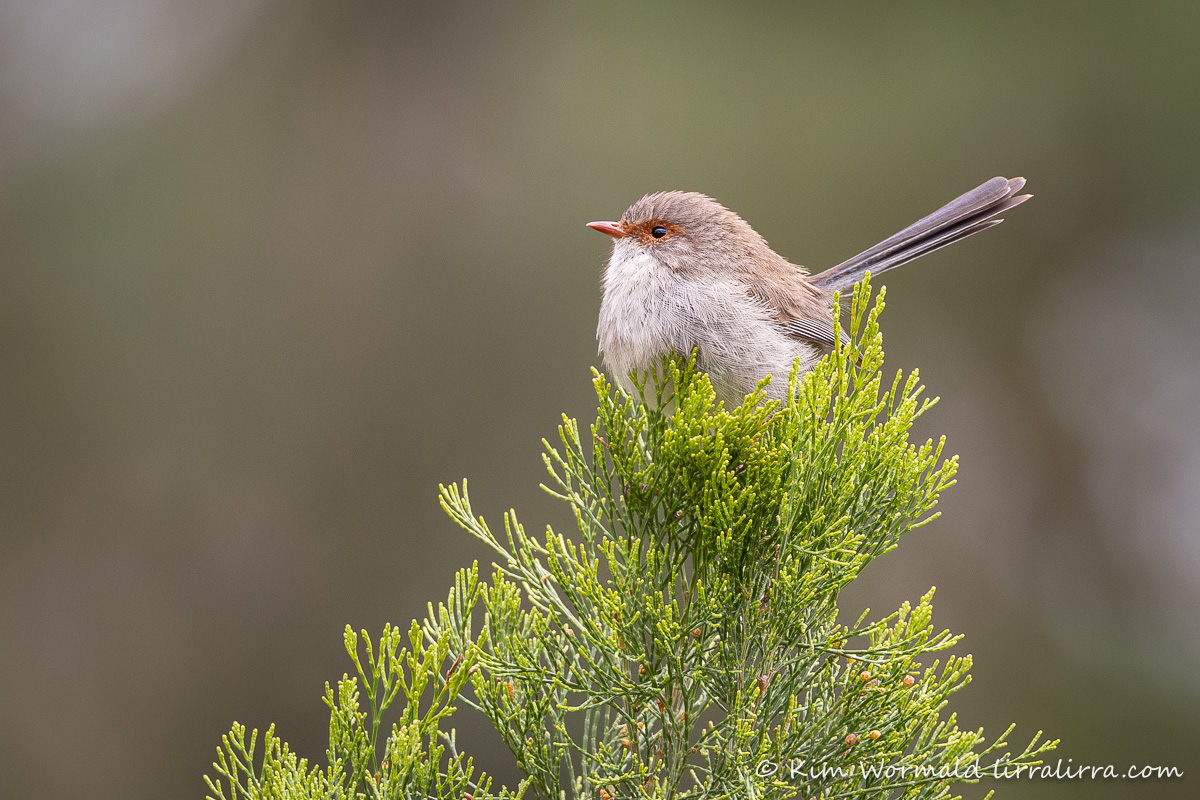
I photographed male and female Superb Fairywrens at Snape Reserve but especially like this shot of the female, nestled at the top of this plant.

This is the photograph I shared last week, before lightening started the fires. It is my favourite shot of the trip and I feel very lucky not to have missed it all together as I had stupidly ignored the splashing sounds while focussing on a kingfisher on the far side of the dam. I love the way this ones wet feathers look so sweet. I love everything about the shot actually, including the perch and the silty dam water creating the perfect backdrop.
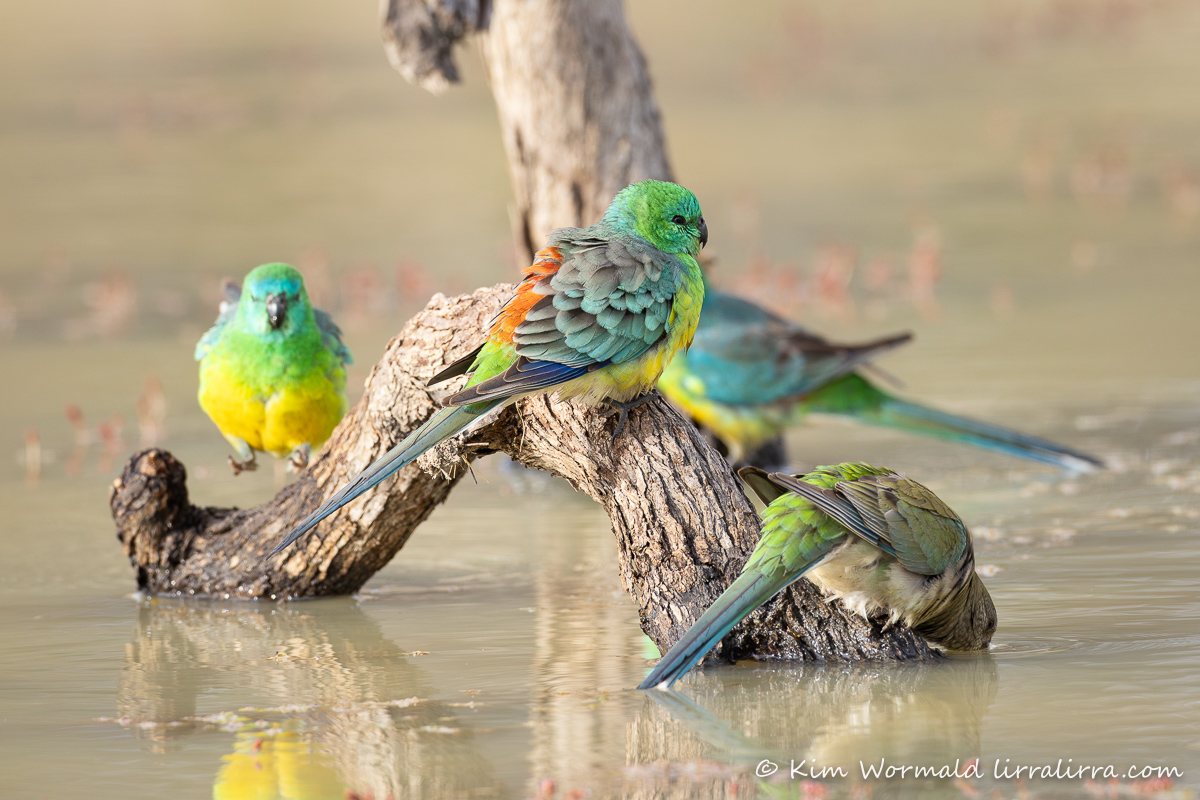
Red-rumped Parrots are super pretty little birds. The males have the red rumps but both sexes are gorgeous.

White-winged Choughs greeted me as I entered Snape Reserve and farewelled me as I left. They are always in groups but only this one came into the open enough for me to get a reasonable photograph. They have large patches of white feathers on their wings that are obvious in flight, just a tiny glimpse of white can be seen in this shot if you look closely. More obvious is their bright red iris and decurved bill.
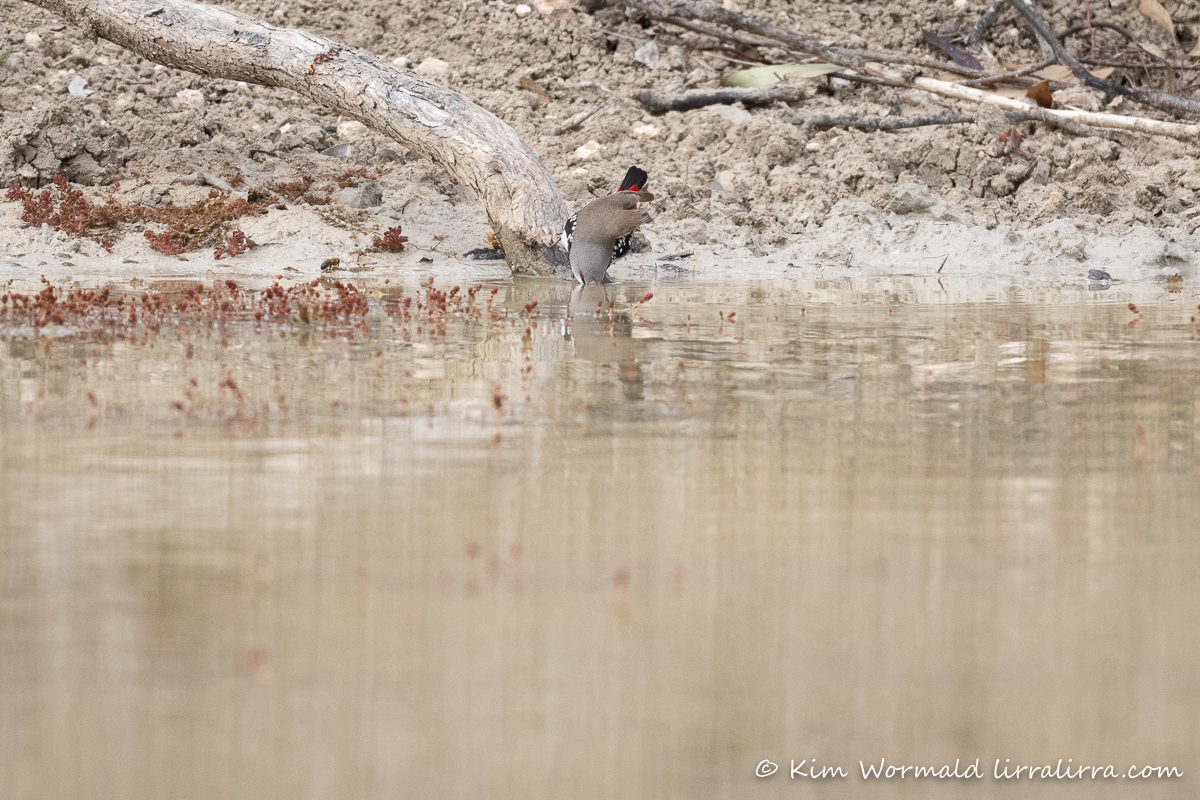
I was stoked to see Diamond Firetails come to drink on the far side of the dam. This photograph wouldn’t have seen the light of day in ordinary circumstances but it was so lovely to see the species that I had to include a shot, poor as it is.
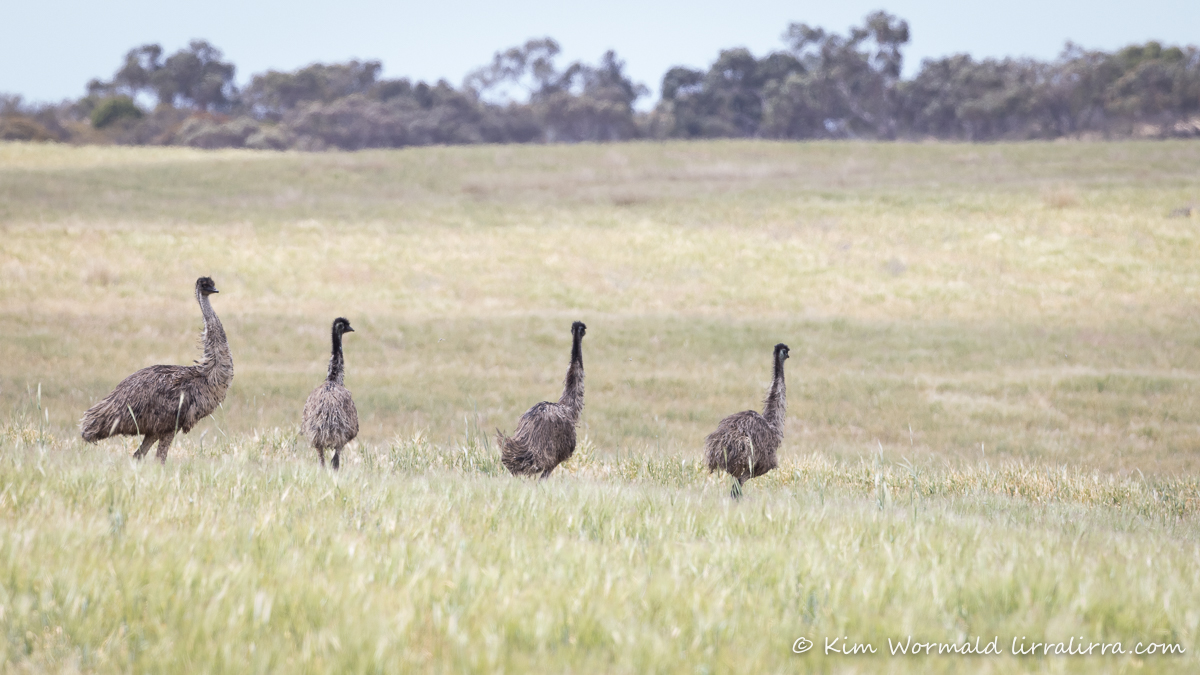
Can anyone watch Emus without smiling? They are such comical, curious birds.
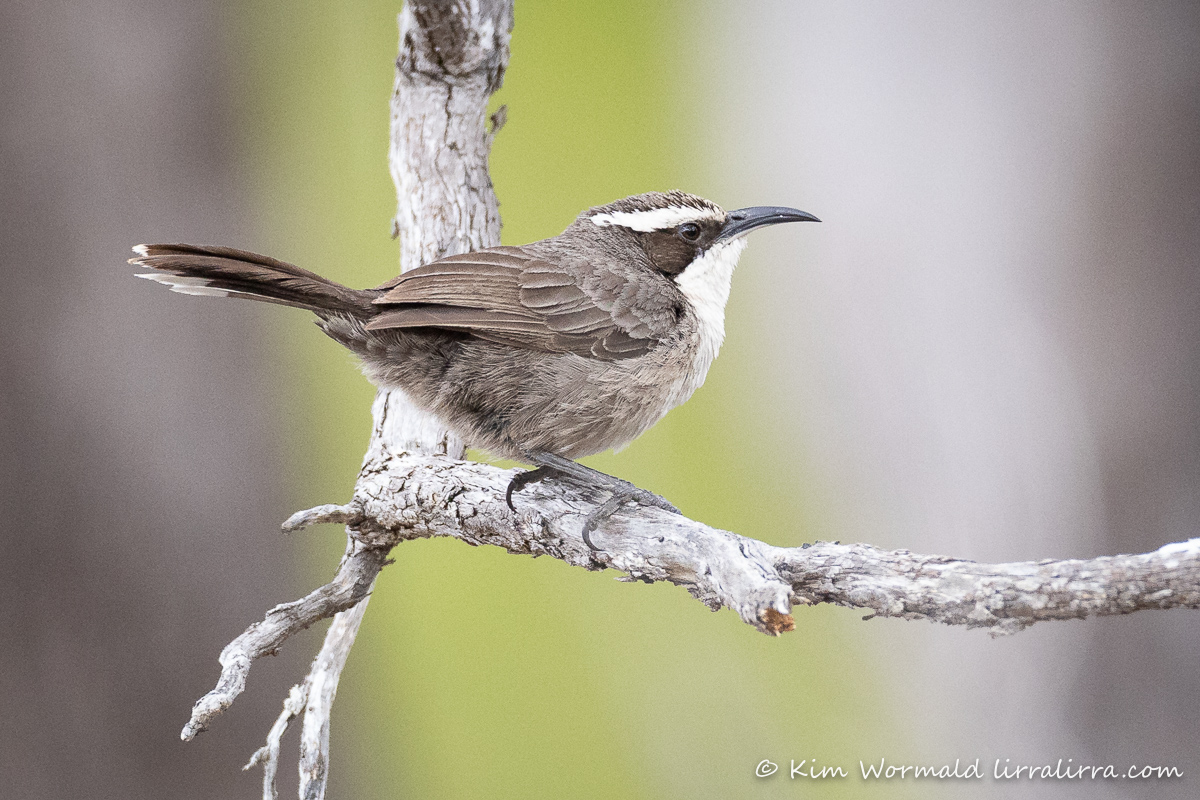
I usually spot White-browed Babblers on the ground but think this one looks super cute on its perch. Despite its somewhat grumpy look they always seem like very happy birds as they chatter among themselves while foraging.
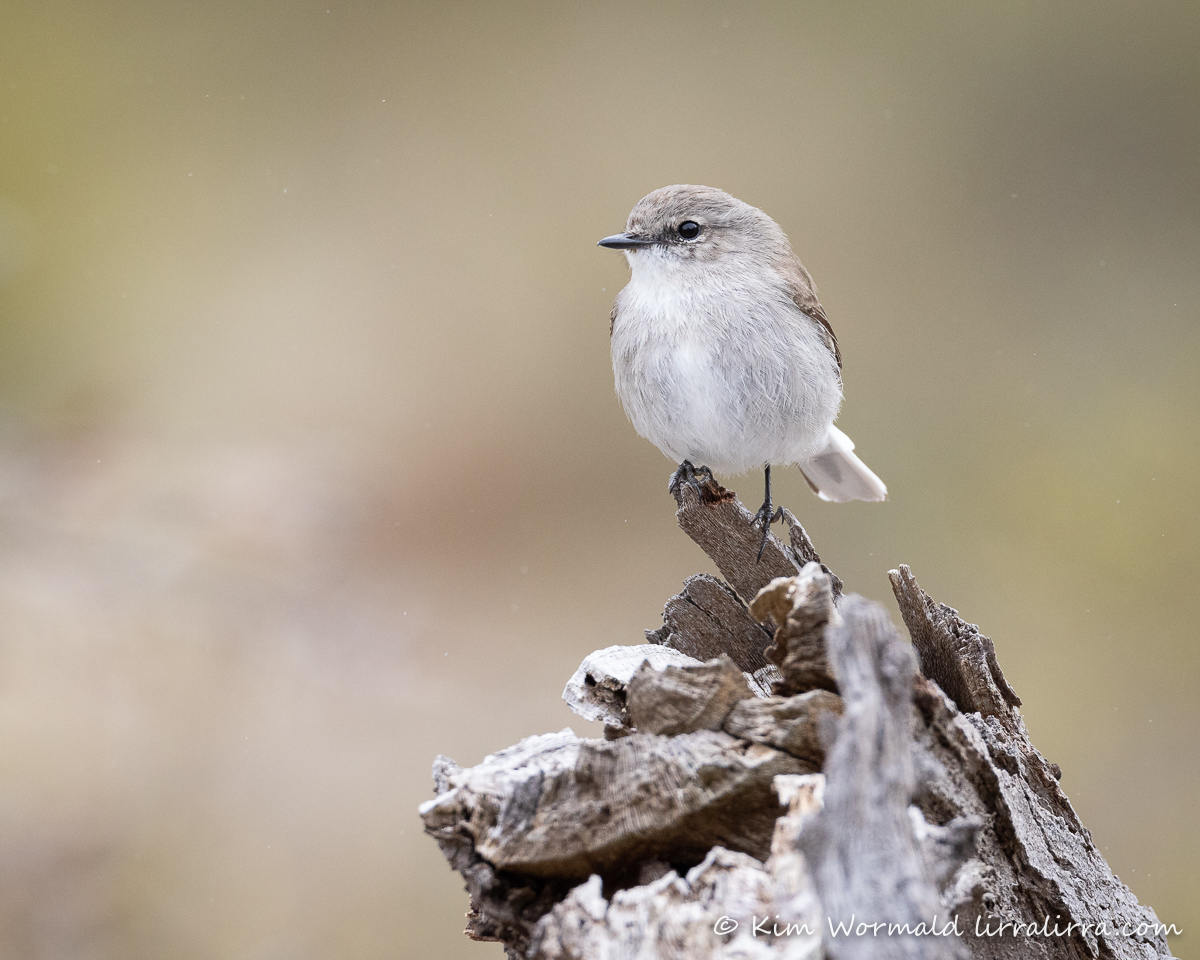
I took many photographs of Jacky Winters but couldn’t go past this one as it perched majestically in such a delightful spot. This species dart out from their perching places to catch insects on the wing.
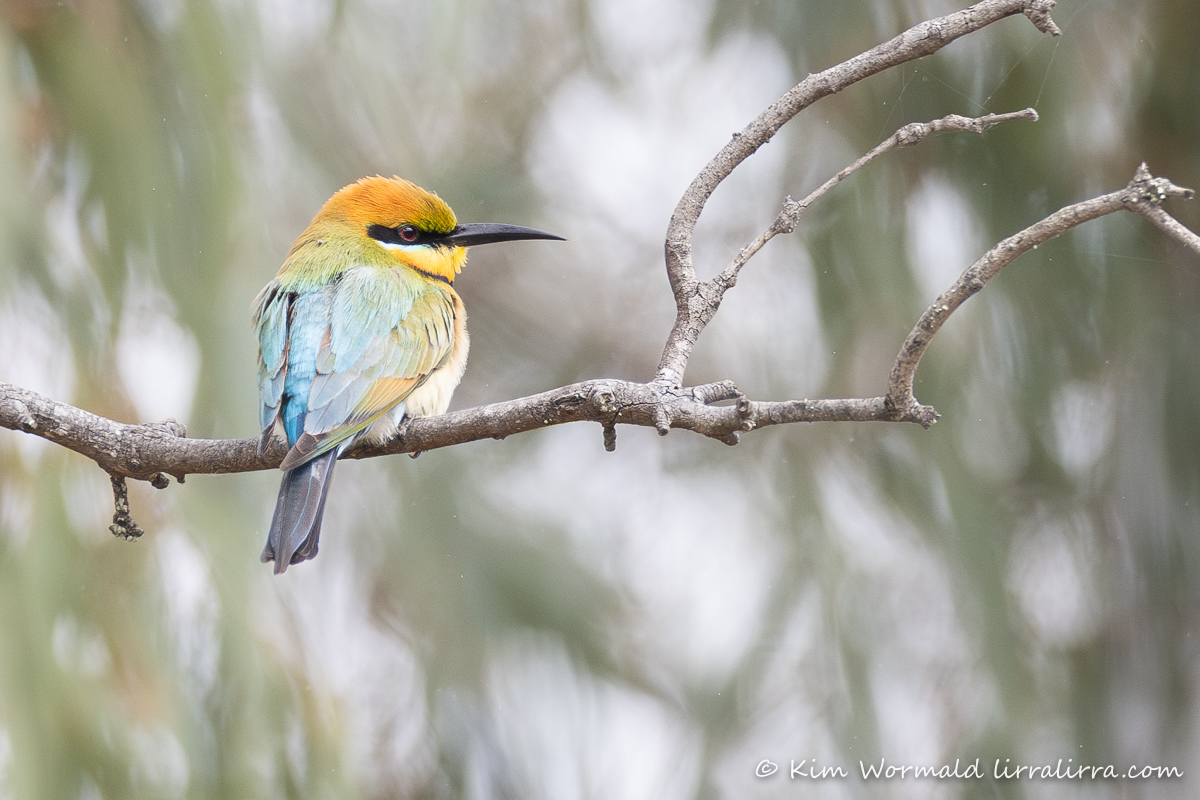
Rainbow Bee-eaters are just beautiful. I could watch them all day. I love the background (as well as the subject) in this shot.
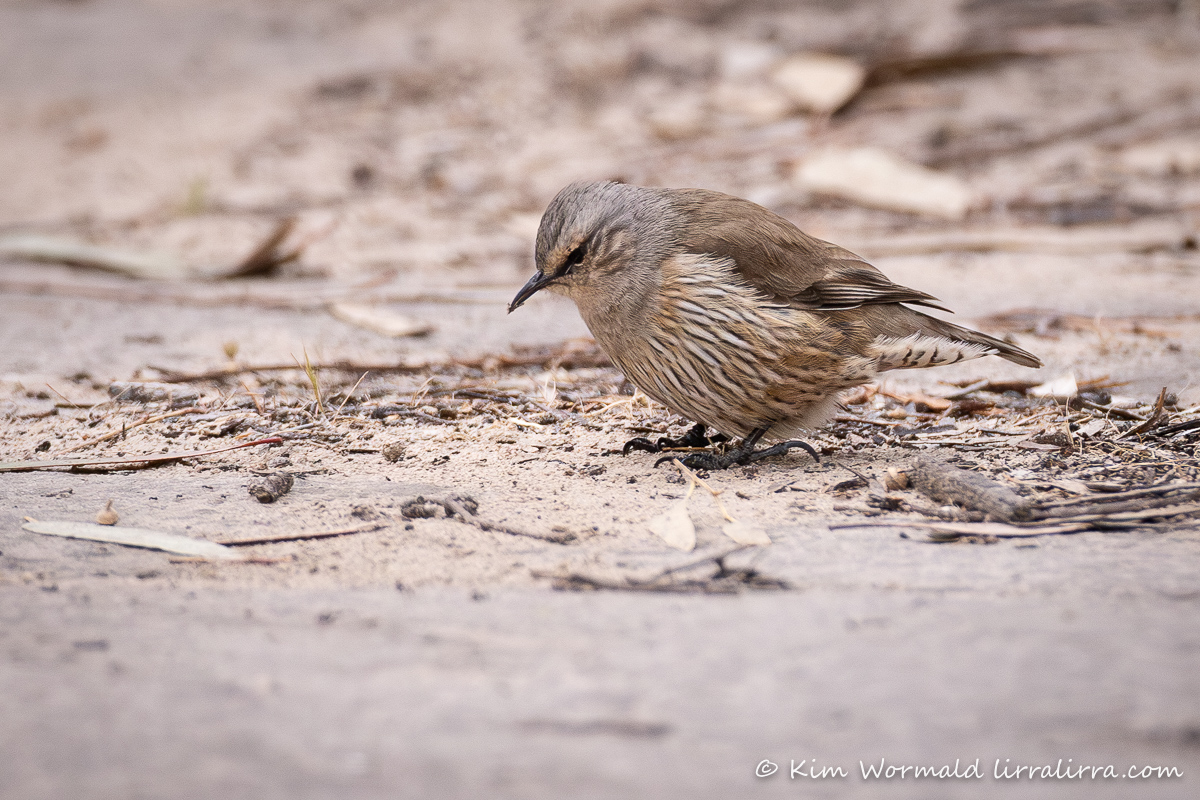
Brown Treecreepers are often foraging on fallen timber but I saw this one peering closely at the ground as it searched for ants which are its favourite food. Their colouring blends perfectly with their habitat and, like other treecreepers, they have very large feet.
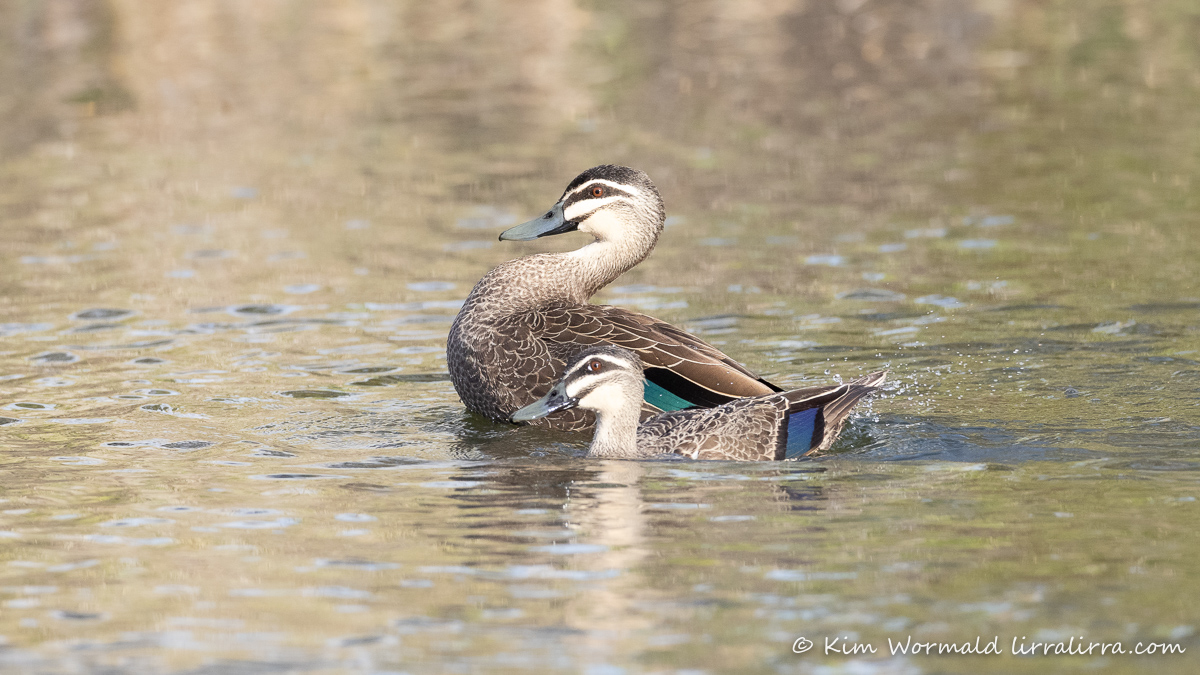
It’s not every day that I can tell which Pacific Black Duck is male and which is female but it’s pretty obvious in this shot as they had just been busily making ducklings.
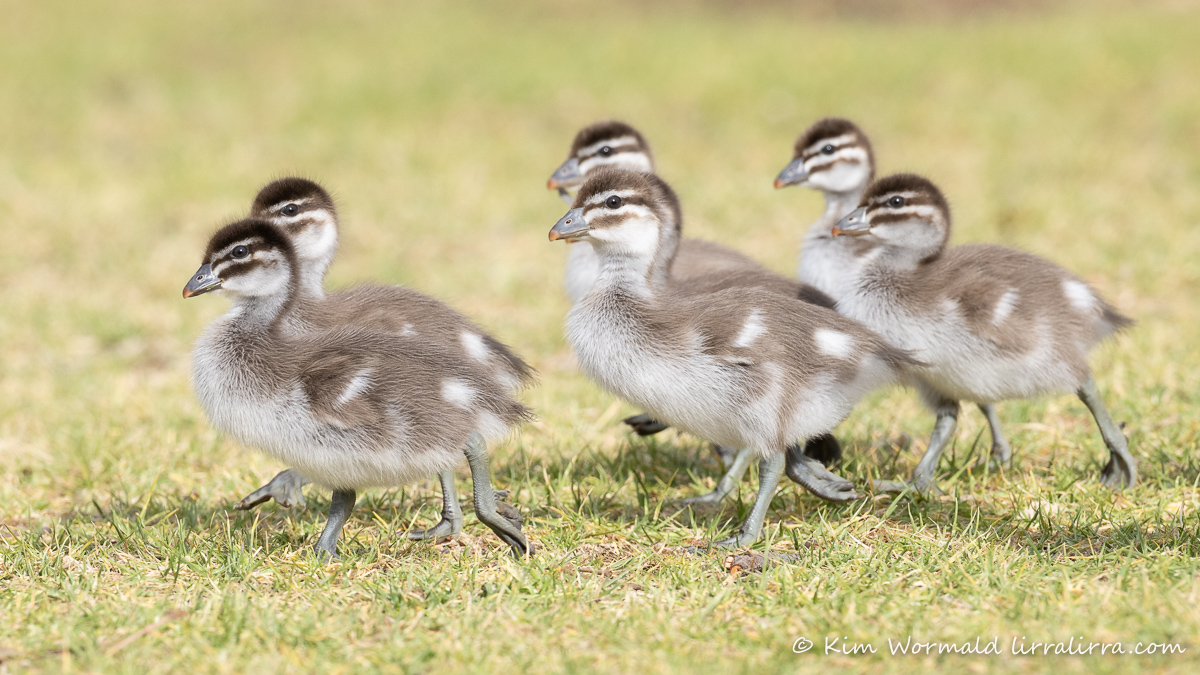
And here are some ducklings, of a different species, striding across the grass with their mumma in front and their dad behind them.
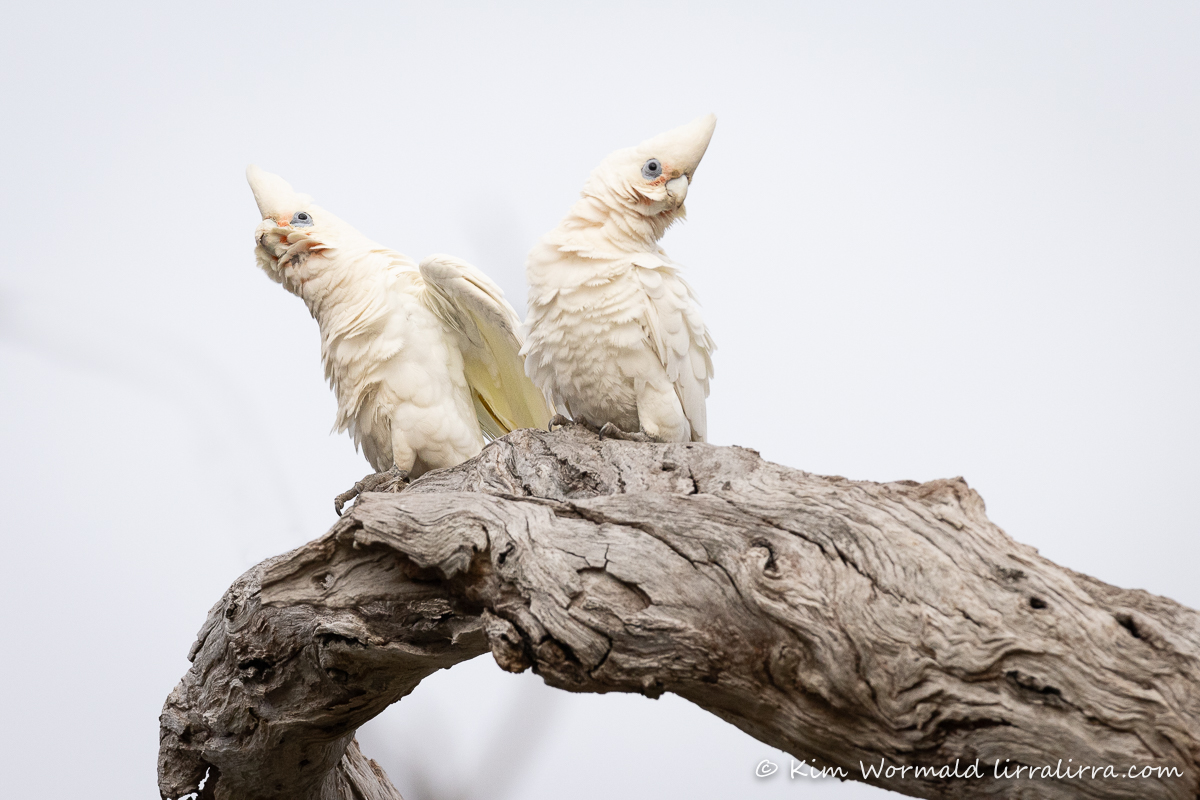
I took this shot out of the sunroof of my vehicle. I thought they looked pretty funny and from their expression I think they thought the same of me.
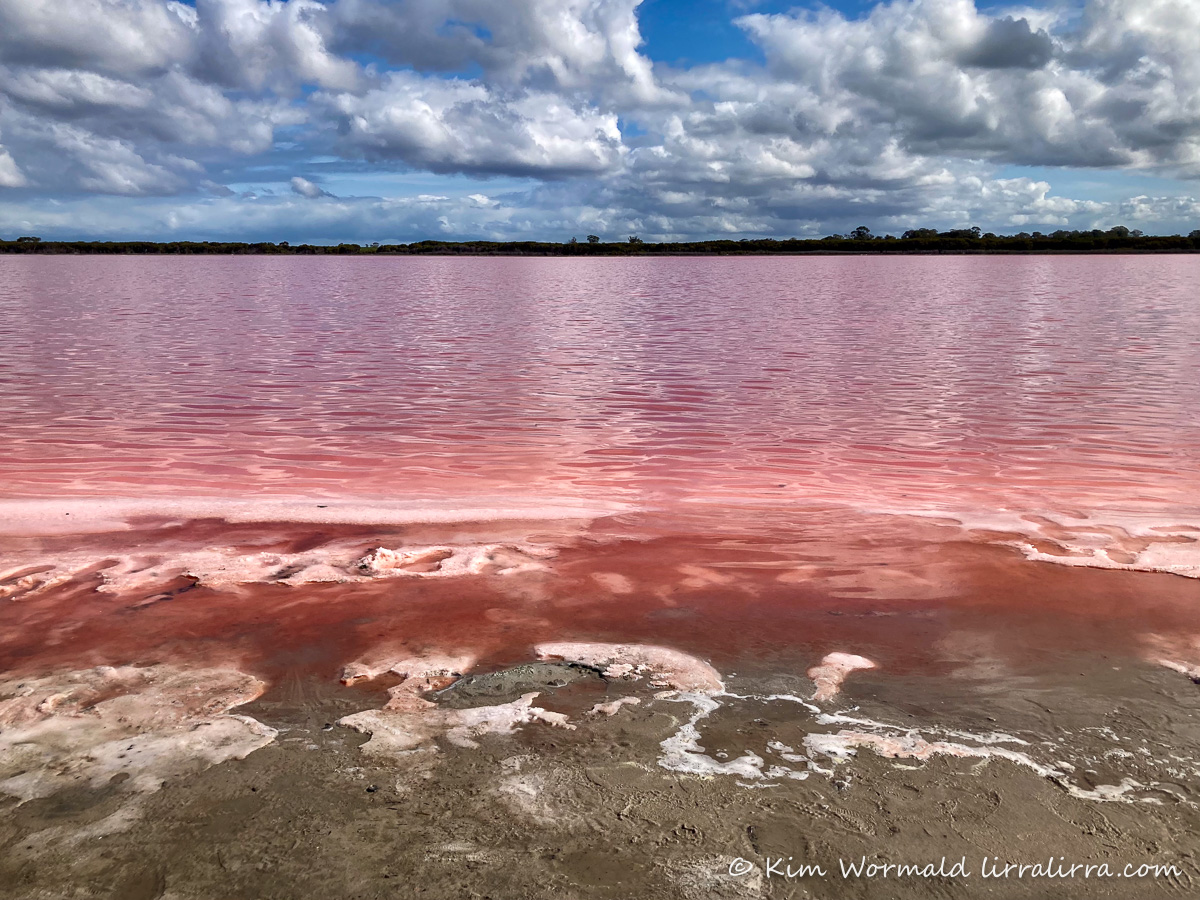
How extraordinary is this Pink Lake! Each time I see it I can hardly believe my eyes, though it doesn’t always look as pink as this. The colour changes depending on the season, the weather and the time of day. It is caused by algae that is tolerant of the high level of salt in the water.
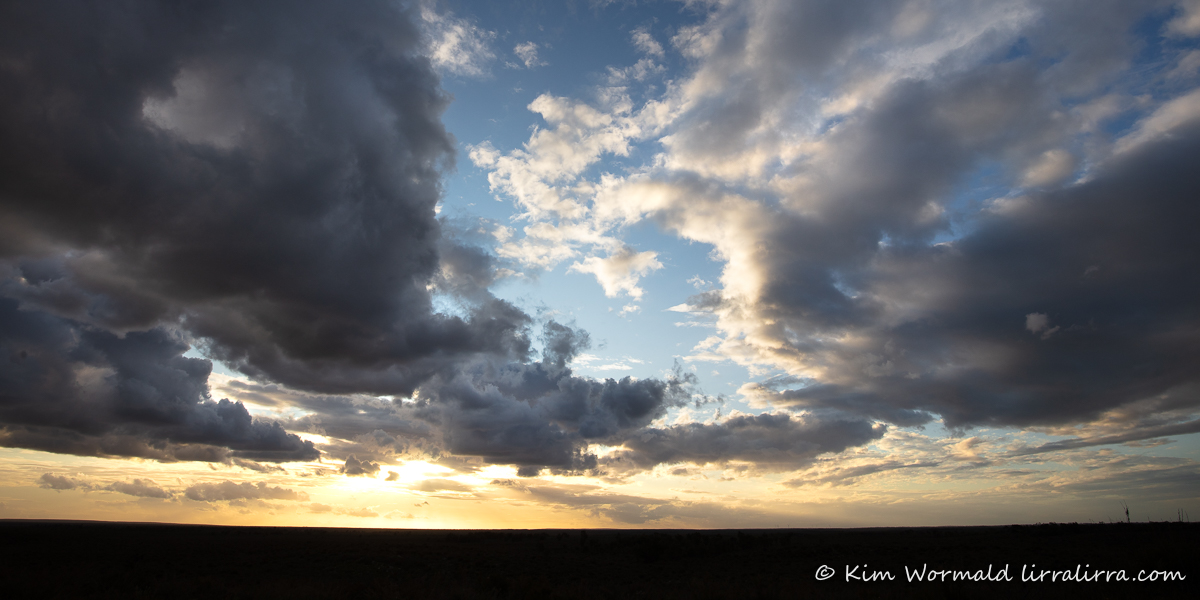
There is a lookout in the Little Desert National Park that is just magnificent, a hill where you can look to the horizon all around you. This was the view just before sunset.
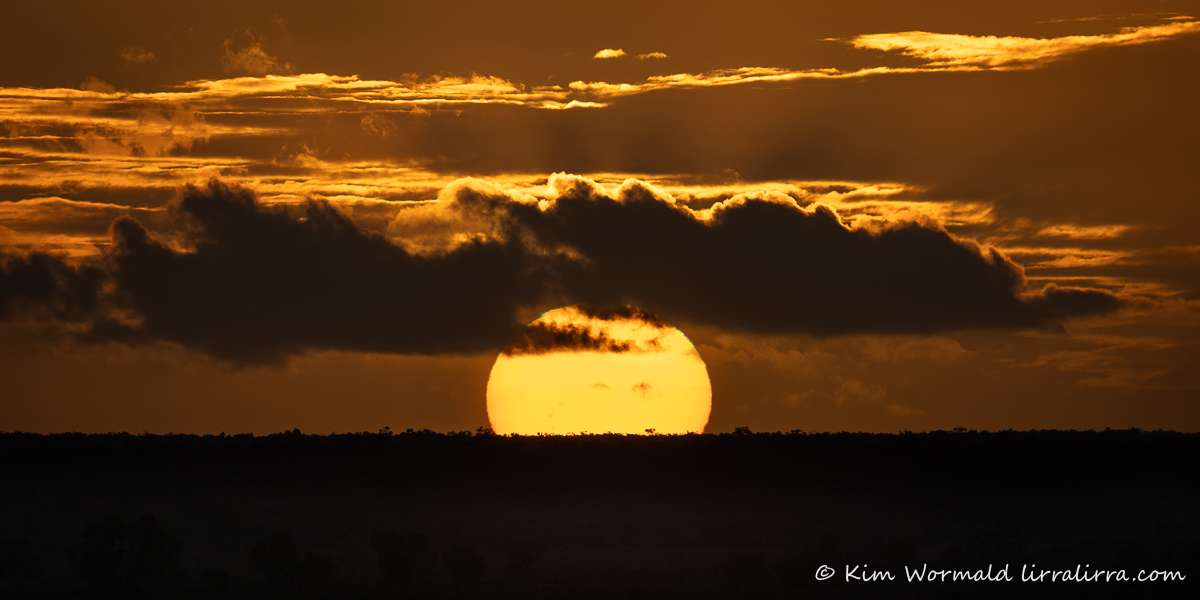
As the sun dropped lower in the sky, or rather as the planet rotated away from the sun, I decided to use my long lens to photograph the sunset – and I’m glad I did.
Putting this post together has been difficult. Every time I processed a photograph I looked into the subjects’ eyes and hoped, hoped so much, that they have survived the fires. While my eyes kept filling with tears.
Both Snape Reserve and Horseshoe Bend have been burnt. Another of my favourite places, the Little Desert Nature Lodge, has been razed.
The extent and ferocity of these fires is staggering. As I mentioned at the start 65000 hectares were burnt in one day. The Grampians are also being impacted by fires, it took three weeks for an area that size to be lost.
I know people speak of how quickly the Australian bush can recover from fires but it takes time, and it takes rain, and who knows how long it will take with climate change affecting weather patterns. Even after the bush has regenerated it may take many years for wildlife to reach the numbers they had just last week. And life won’t be easy for the creatures that survived – what will they eat, where will they shelter?
If you would like to make a donation to help the rescuers may I suggest Vets for Compassion. If you know of other places that need donations please let me know in the comments. Wildlife shelters like Wildwood and Hamilton come to mind but I am sure there are others. Just be careful to ensure any donation is going directly where you would like it too.
UPDATE: Sharyn has suggested adding her local registered wildlife carer, Stacey Whitehorse, to the donation list. A go-fund me has been started at https://gofund.me/0afe6962 As I write this update, it has reached almost half of its goal of $3000.
Please put water out for the wildlife, regardless of whatever size garden you have, even a bowl of water on a balcony will be likely be used by something. And please stay safe this summer.
At times like this we need ‘happy birding’ moments even more than usual, Kim
~ Facebook page Kim Wormald – lirralirra – 8.5K followers
~ Facebook group Ethical Bird Photography
~ Browse prints and gifts Lirralirra Shop or contact me directly

OMG Kim your photos are sensational and its gut wrenching to hear whats happened out there!!
It really is gut wrenching Tess…
While I feel for the people and all the losses associated with bushfire, I always feel a physical ache for our already struggling wildlife and our scarred landscape. While the bushland regenerates, so much of our wildlife is lost and the suffering just awful. Thank you to all our wildlife carers and rescuers. The lack of oxygen with fires makes escape difficult even for the birdlife. I’m still reeling from the loss for every living creature of 2020, we have had some simply awful events.
On a lighter note, I don’t know how your photography keeps getting better, but somehow you bring one more beautiful shot after another, capturing the essence of the gorgeous birds and their personalities. Love seeing all your posts, thank you.
I understand exactly what you mean Syndy. I think the world would be a better place for our wildlife (and consequently for humans too) if everyone thought this way. Thank you for your kind words about my photography, and thank you for caring
Was / is one of my all time favourite places to stay between Melbourne & Adelaide (and to take overseas guests to) — loved the Emu (George?) who ate my oats when I left the boot open when camping (silly me). MANY thanks for sharing these photos memories. Hopefully nature will come back — unlikely they will rebuild the Lodge — it has changed ownership several times — I think.
I’m hopeful that they will rebuild the lodge Deb. Anywhere in the Little Desert is a beaut place to stay between Melbourne and Adelaide, though I often do the run in one go. I think I’ll always aim to stop from now on.
My heart was breaking when the first news of the fires flashed into my VicEmergency app , and then the news of the destruction of the Lodge . I’d just started forward planning for a 30-strong field naturalist club camp there in Spring . The first email with tentative dates had gone out last week . Hopefully we might be able to camp on the site if some rudimentary facilities can be put in place . The entire district will need all the support they can get……emotional, moral, financial , and practical . The area is such an ancient landscape full of ancient botany that may well have survived and will regrow from lignotubers . Sadly tiny orchids and the like may take decades to recover in numbers . To say nothing of slower moving wildlife . I’m sad to say I’ll probably never see the Little Desert in my lifetime as I remember it . Your photos are a fine record . Thanks Kim
I too was looking forward to going back over. We had a great time when we were there. I guess we may not catch up there again for awhile.Sad for all concerned
I’m imagining there will be a time when the local businesses will let everyone know that they are ready for visitors, maybe even needing visitors to help keep their businesses running.
I think that Field Nat visits and the like will be important in the coming months to document the flora and fauna. Last week I set up my next visit to Dimboola, it won’t be what I was imagining but hopefully there will be some ways I can help. Your penultimate sentence rings very true Paul, hopefully there will be some unexpected positives amongst the despair.
Thanks Kim for showcasing our beautiful region and your support. My daughter put this on fb yesterday.
But what I am really worried about are the ones who won’t be okay – our native wildlife. They’ve lost their habitat, many will be injured, and with so much land burnt, they’ll have limited food.
I’ve just donated to our local wildlife rescuer, and if you’re looking for a way to help, I’d love for others to do the same.
https://gofund.me/0afe6962
Thank you.
I can assure you that Stacey Whitehorse (our registered wildlife carer) will ensure your donations reach intended wildlife.
Please visit when weather is cooler
snapereserve.au
I have been thinking about you so much, and all the others who care so deeply about native wildlife. It feels surreal, I keep imagining it as I it was when I was there and then I’ll get a more powerful image preparing me for what it might be now. Thank you for sharing details of Stacey’s wildlife shelter – I have updated the post to include details of her GoFundMe xo
Beautiful, poignant photos, Kim – and I share your fears for all the animals at the mercy of those brutal bushfires. Don’t forget that animals have a sixth sense about impending disaster – so I’m sure that many of the birds would smell the smoke, and were able to fly away from the fire as it raced towards them, and hopefully the kangas were also able to leap ahead of it too. I hope the goannas were able to hide from the flames, in burrows. I could not believe how big they are – 2 metres long! And the markings on their skin remind me of the dot patterns and dashes on indigenous paintings. Amazing. But as you said, food and the lack of rain remain a real problem for the survivors. It’s strangely lucky for the Mallee, that battling farmers gave up on it by the 1960s, as being far too dry and infertile for any type of farming, so they downed tools and left it to the wildlife, which have thrived. But even our resilient animals have their breaking point. Australia has always been a tough country – and it cannot be denied, that it seems to be getting tougher…
You make some very valid points Deirdre, as always. I’m feeling so much for all the people and wildlife that are impacted…
Such a stunning collection of the marvellous wildlife. We can only hope they will be able to ride out these horrifying bushfires.
We have to cling on to hope don’t we…